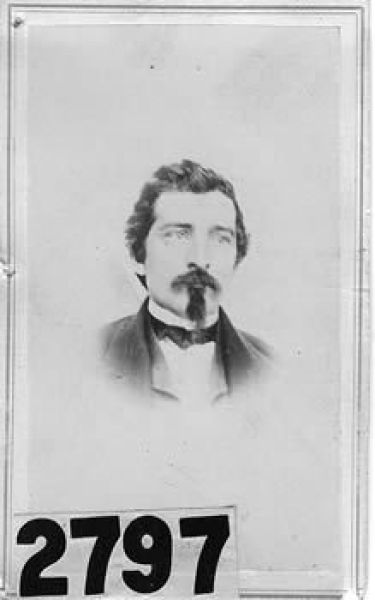173rd Infantry Regiment
Nickname: Fourth Metropolitan Guard; Fourth National Guard
Mustered in: November 10, 1862
Mustered out: October 18, 1865
The following is taken from New York in the War of the Rebellion, 3rd ed. Frederick Phisterer. Albany: J. B. Lyon Company, 1912.
September 22, 1862, Col. Charles B. Morton received authority to recruit this regiment as one of the Metropolitan Brigade; it was organized at Riker's Island, and there mustered in the service of the United States for three years November 10, 1862.
The companies were recruited under the auspices of the police departments of the cities of New York and Brooklyn, principally in those cities; Company B was, however, originally intended for the 87th Infantry, which was discontinued September 6. 1862.
The regiment left the State December 9, 1862; it served in the 2d Brigade, Emory's Division, Department of the Gulf, from December, 1862; in the 2d Brigade, 3d Division, 19th Corps, from April, 1863; in the 1st Brigade, 3d Division, 19th Corps, from July, 1863; in the 1st Brigade, 1st Division, 19th Corps, from February, 1864; in the 3d Brigade, 1st Division, 19th Corps, from March, 1864; in the Army of the Shenandoah, from March, 1865; in the defenses of Washington, from April, 1865; in the Department of the South and of Georgia, from June and July, 1863, respectively; and, commanded by Col. Lewis M. Peck, it was honorably discharged and mustered out October 18, 1865, at Savannah, Ga.
During its service the regiment lost by death, killed in action, 2 officers, 21 enlisted men; of wounds received in action, 4 officers, 24 enlisted men; of disease and other causes, 2 officers, 126 enlisted men; total, 8 officers, 171 enlisted men; aggregate, 179; of whom 31 enlisted men died in the hands of the enemy.
The following is taken from The Union army: a history of military affairs in the loyal states, 1861-65 -- records of the regiments in the Union army -- cyclopedia of battles -- memoirs of commanders and soldiers. Madison, WI: Federal Pub. Co., 1908. volume II.
One Hundred and Seventy-third Infantry.—Cols., Charles B. Morton, Lewis M. Peck; Lieut.-Cols., Lewis M. Peck, William N. Green, Jr., Mellen T. Holbrook; Majs., A. Power Galloway, George W. Rogers. This regiment, known as the 4th Metropolitan Guard, and 4th National Guard, was recruited in the cities of New York and Brooklyn by the police departments of those cities, as one of the Metropolitan brigade. It was organized at Riker's island and there mustered into the U. S. service for three years on Nov. JO, 1862. On leaving the state, Dec. 9, the regiment sailed for Louisiana, where it was assigned to the 2nd brigade of Emory's (3d) division, 19th corps. It came under fire for the first time at Fort Bisland, losing 7 killed and wounded, and a detachment under Capt. Conrady skirmished at Breaux bridge, Bayou Teche. The regiment took an active part in the siege of Port Hudson, where its total loss was 92 killed and wounded. Among the mortally wounded in the second assault on June 14, was Maj. Galloway. It was engaged at Carrion Crow bayou in Nov., 1863, and the following spring, in the 3d brigade of Emory's division, 19th corps, it took part in Banks' Red River campaign, being engaged in the fights at Sabine cross-roads, Pleasant Hill and Mansura, its loss in the first two battles being 232 killed, wounded and missing. Lieut.-Col. Green was killed at Pleasant Hill. Though the regiment was not again engaged in battle after the close of this campaign, it continued in active service. In July, 1864, it accompanied the 1st and 2nd divisions to Virginia and became a part of Sheridan's Army in the Shenandoah. It was on detached service with Currie's brigade at Harper's Ferry during the battle of Winchester, and at the time of the battle of Cedar creek was guarding wagon trains and was not engaged in the fight. The regiment remained with Dwight's (1st) division in the valley until April, 1865, and then moved to Washington for a number of weeks. The war was now over, and after taking part in the grand review it was ordered to Savannah, and was there mustered out under Col. Peck, Oct. 18, 1865. The regiment lost during service in killed and mortally wounded, 6 officers and 45 enlisted men; died of disease and other causes, 2 officers and 126 enlisted men, a total of 179.

